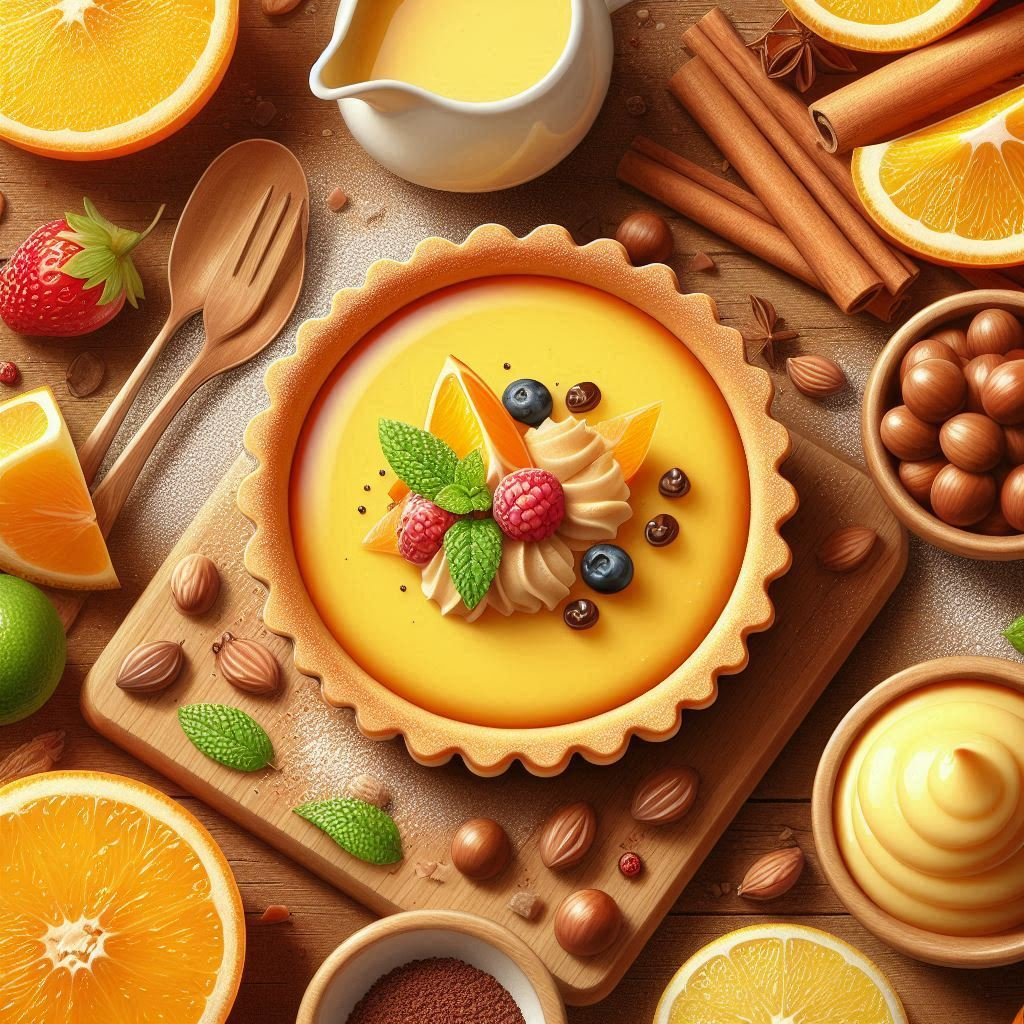
Custard Tart: A Timeless Treat with a Rich History
Custard tarts, with their delightful combination of a sweet, creamy filling and a flaky, buttery crust, have captivated taste buds for centuries. Join us on a culinary journey to explore the fascinating history and intricate preparation of this beloved dessert.
A Journey Through Time
The origins of custard tarts can be traced back to the Middle Ages, when they were known as “flans.” These early tarts consisted of a simple filling made from milk, eggs, and sugar, poured into a pastry shell. Over time, the recipe evolved, incorporating additional ingredients such as vanilla, nutmeg, and cinnamon.
In the 16th century, custard tarts gained popularity in France, where they became known as “tartelettes.” French pastry chefs refined the recipe, creating a more elaborate crust and a richer, more flavorful filling. By the 18th century, custard tarts had become a staple of European cuisine, enjoyed by royalty and commoners alike.
The Art of Preparation
Creating the perfect custard tart requires a combination of precision and artistry. Let’s break down the steps involved in this culinary masterpiece:
The Crust:
- Ingredients: Plain flour, cold butter, ice water, a pinch of salt
- Method: Combine flour and salt in a bowl. Cut in cold butter until the mixture resembles coarse crumbs. Gradually add ice water while mixing until the dough just comes together. Form into a ball, wrap in plastic, and refrigerate for at least 30 minutes.
- Rolling and Baking: On a lightly floured surface, roll out the dough to a thin circle. Transfer to a greased tart pan and trim the edges. Bake in a preheated oven at 180°C (350°F) for 15-20 minutes, or until golden brown.
The Custard Filling:
- Ingredients: Milk, eggs, sugar, vanilla extract, nutmeg, cinnamon
- Method: In a saucepan, heat milk until just simmering. In a separate bowl, whisk together eggs, sugar, vanilla extract, nutmeg, and cinnamon. Gradually whisk in the hot milk. Return the mixture to the saucepan and cook over medium heat, stirring constantly, until thickened.
Assembling the Tart:
- Pouring the Custard: Once the custard has thickened, remove from heat and let cool slightly. Pour the custard filling into the baked tart shell.
- Baking: Bake in a preheated oven at 160°C (325°F) for 30-35 minutes, or until the custard is set and the top is lightly browned.
- Cooling and Serving: Let the tart cool to room temperature before refrigerating for at least 4 hours or overnight. Serve chilled, dusted with confectioners’ sugar or garnished with fresh berries.
Tips for Success:
- Use high-quality ingredients for the best flavor.
- Make sure the butter is very cold when making the crust to prevent it from becoming tough.
- Blind bake the crust before filling to prevent it from becoming soggy.
- Don’t overcook the custard, as it will become rubbery.
- Let the tart cool completely before refrigerating to prevent condensation from forming on the custard.
Variations and Adaptations:
The classic custard tart offers endless possibilities for experimentation. Here are a few popular variations:
- Fruit Tarts: Add fresh or frozen fruit to the custard filling for a burst of flavor and color.
- Chocolate Tarts: Incorporate melted chocolate into the custard filling for a decadent treat.
- Savory Tarts: Use a savory filling made with cheese, vegetables, or meat to create a unique appetizer or main course.
Conclusion
Custard tarts, with their timeless appeal and versatile nature, continue to delight dessert enthusiasts worldwide. Whether savored as a traditional treat or reimagined with creative variations, this culinary masterpiece is a testament to the enduring power of culinary art. So, gather your ingredients, embrace the joy of baking, and indulge in the exquisite experience of a homemade custard tart.



